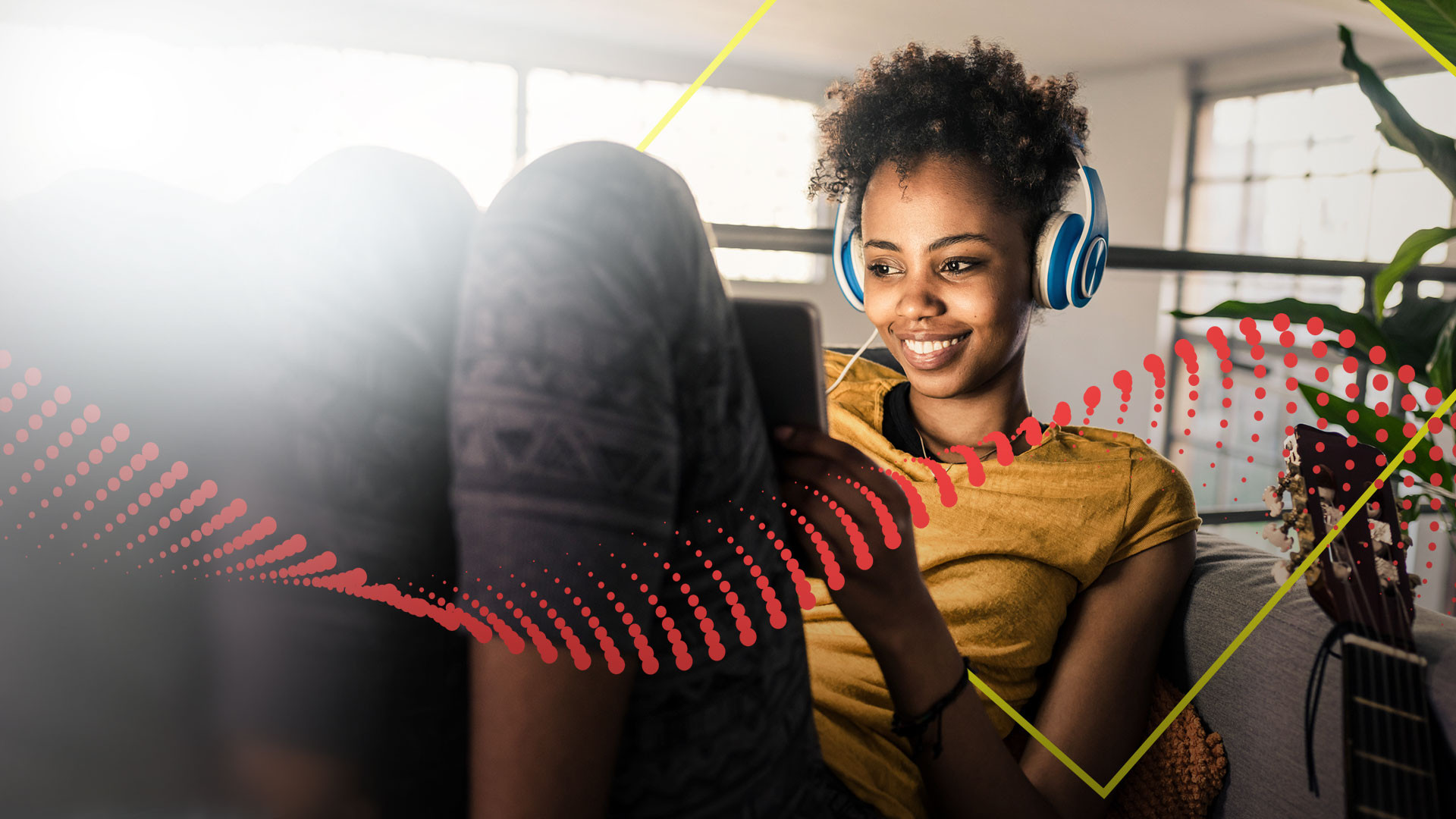Each residential nbn® plan sits on one of the seven main nbn® speed tiers, which have different maximum download and upload speeds measured in Megabits per second (Mbps). But what do these speed tiers actually mean, and what impact can it have on the quality of the Wifi connection in your home? Let us break it down for you.
FIRST THINGS FIRST - HOW DOES THE NBN REACH MY HOME?
There are a number of different ways that the nbn® can reach your home, and this can impact the type of internet connection you receive.
The different types of NBN delivery include:- Fibre to the Premises (FTTP) - Where fibre optics cabling is installed directly inside your property. This can deliver fast internet services with up to 1gbit/s speeds.
- Fibre to the Node / Basement (FTTN/B) - Where both fibre optic cables and the existing copper telephone network are used to deliver nbn® to your home. Fibre optic cables are installed in an area and terminate at the node, which is a large green box positioned on your street. At the node, the fibre optic cables are then connected to the existing copper network that runs into your home.
- Fixed Wireless - A Fixed Wireless connection is where the nbn® is delivered to your home via a wireless signal. A receiver is installed at the property which will pick up the nbn® signal from a large transmitter in the area.
- Hybrid Fibre Coaxial (HFC) - Where existing cable TV and internet cable networks in some urban areas will be used to connect your home to the nbn® network.
- Fibre to the Curb (FTTC) - In a FTTC area, nbn® will run fibre optic cables along every street, and at the distribution point outside your home the fibre will be connected to the existing copper cable that runs into the property - this could be in a telecommunications pit outside the house or on a nearby telegraph pole. As these connections use the shortest amount of copper cable, far greater speeds are possible in comparison to a FTTN connection.
- Satellite NBN - In extremely remote areas or those not serviced by the other nbn® delivery methods, people can access nbn® using a satellite dish which is installed by a qualified nbn® technician. Speeds and data inclusions are not the same as those available on other nbn® delivery methods. Satellite nbn® is the only type of nbn® that More cannot provide.
WHAT IS AN NBN SPEED TIER?
The nbn® offer a range of speed tiers on the network that you can choose from, the most common being NBN12, NBN25, NBN50 and NBN100. The speeds refer to the maximum download and upload speeds available on your internet plan.
Each speed tier attracts a different wholesale cost from the nbn®, and therefore a different price charged to the customer by their service operator.
The seven different nbn®speed tiers are:- NBN2 - 12/1: 12Mbps download, 1Mbps upload
- NBN25 - 25/10: 25Mbps download, 10Mbps upload
- NBN50 - 50/20: 50Mbps download, 20Mbps upload
- NBN100/20 - 100/2 : 100Mbps download, 20Mbps upload
- NBN100 - 100/40: 100Mbps download, 40Mbps upload
- NBN250 - 250/25: 250Mbps download, 25Mbps upload
- NBN1000 - 1000/50: 1000Mbps download, 50Mbps upload
It is important to remember that these speed tiers are the theoretical maximum speed that is possible on the ordered nbn® service, and these are not always achieved, particularly during peak times of internet usage. Peak times are generally between 6pm and 10pm when more people are likely to be using the internet. These are often referred to as Typical Evening Speeds.
UNDERSTANDING TYPICAL EVENING SPEEDS
The following list is how the Australian Competition & Consumer Commission (ACCC) currently define Typical Evening Speed tiers:- Basic Evening Speed: this is the entry-level plan for basic internet needs. If you are moving to the NBN on a plan with this label you may experience a small increase or decrease in speed, depending on how good your existing connection is (e.g. existing copper / ADSL technologies provide a range of speeds).
- Standard Evening Speed: plans using this label will deliver a minimum speed of 15Mbps during the bury period. This plan would support a typical usage profile of residential customers (e.g. streaming one high definition movie at the same time as web browsing on another device during the busy period)
- Standard Plus Evening Speed: plans using this label will deliver a minimum speed of 30Mbps during the busy period. This plan would be suitable for a higher usage profile (e.g. streaming an ultra-high definition movie and streaming music on one or more other device during the busy period)
- Premium Evening Speed: plans using this label will deliver a minimum speed of 60Mbps during the busy period. This plan would be suitable for a higher usage profile than Standard Plus (e.g. streaming an ultra-high definition movie at the same time as gaming on other devices during the busy period).
Find out more about Typical evening Speeds in the ACCC Broadband Speed Claims - Industry Guidance document.
WHAT NBN SPEEDS DO MORE HAVE ON OFFER?
At More, we currently offer the following speeds on our unlimited data plans.
OTHER FACTORS THAT CAN INFLUENCE YOUR INTERNET SPEED
Depending on the delivery method of the nbn®, other factors may influence what internet speeds you get in your home. This is particularly important to note on FTTN/B connections. If a property has old or poor-quality copper running to it, the achieved internet speed will be negatively affected. If the property has a long length of cable from the node to the property this will also negatively influence the maximum speeds available.
OTHER REASONS FOR SLOW WIFI SPEED CAN INCLUDE:
- Quality and location of your modem hardware - depending on the size and layout of your house, it might be difficult for a strong Wifi signal to reach throughout. We have recently upgraded our modems to the Google Nest Wifi and have the option to create a bundle with either one or two router points.
- NBN network traffic
- Interference from other devices in your home
- Using a Fixed Wireless connection
CHANGING YOUR SPEED TIER FOR A FASTER CONNECTION
More gives their customers the ability to change their speed tier at any time, as long as the speed increase is supported by their nbn® delivery method. This is a quick and easy process that happens remotely with no need for a technician to visit your home - you can login to the Self Care Portal and make the request under 'Change NBN plan' and our team will take care of the rest. Speed changes can usually be processed on the same day as the request is made, so you won't need to wait for your Wifi speed to be taken to the next level.
LEARN ABOUT NBN PLANS FROM THE MORE TEAM
For more information on nbn® speeds, check out the Critical Information Summary documents for each More plan.







